Have you ever tried to remove a hose from an outside faucet and found it difficult or impossible? If so, you’re not alone. Many people struggle with this task, but it’s actually quite simple once you know how.
In this article, we’ll walk you through the steps for removing a hose from an outside faucet and some tips for attaching a new hose.
With these tips, you’ll be able to easily remove and attach hoses to your outside faucets and enjoy the convenience of having a hose at the ready for all your watering needs.
To remove a stuck hose from an outdoor spigot, follow these steps:
- Turn off the water supply to the faucet. This will prevent water from spraying out of the hose or faucet when you remove it.
- Locate the hose clamp or retaining device that secures the hose to the faucet. This is typically a small metal or plastic clamp that can be tightened or loosened with a screwdriver.
- Use a screwdriver to loosen the hose clamp. This will allow you to slide the hose off the faucet.
- Once the hose clamp is loosened, carefully slide the hose off the faucet. If the hose is stuck or difficult to remove, you may need to use some penetrating oil or a hose grip tool to help loosen it.
- Once the hose is removed, inspect the faucet for any damage or debris that may have accumulated. Use a soft cloth or brush to clean the faucet, and ensure it is in good working order before attaching a new hose.
- To attach a new hose, simply slide it onto the faucet and tighten the hose clamp. Ensure the hose is securely attached and there are no leaks before turning the water supply back on.
Have the above tips failed to work for you? No worries. You can also try this alternative method.
Why Did My Hose Get Stuck?
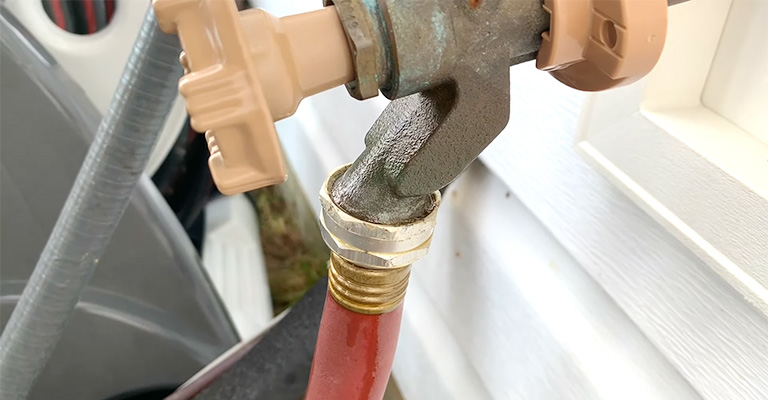
There are a lot of garden hoses that get stuck on outdoor faucets you wouldn’t expect. It’s simple to understand why this happens.
Garden hose connectors are often made by aluminum manufacturers. A hose bib attaches to the outdoor faucet through this part.
When they use aluminum, why do they do that? This is because it is cheaper to produce and has a greater profit margin. Customers are not getting a quality solution from this.
There is, however, one major drawback.
Your spigot’s material is brass, which fuses with aluminum. In fact, it fuses. When water is involved, the process happens faster. Therefore, combining a brass spigot with an aluminum fitting on a garden hose is not a good idea.
Other Ways To Remove A Stuck Hose From An Outdoor Spigot
A hole appeared in our hose recently after it busted. The water kept leaking after we applied duct tape, so we bought a new hose.
It was stuck on the spigot when we tried to remove the old one. There was some buildup around the screw since it had been on for almost three years.
We removed the buildup with a screwdriver and were able to easily detach the new hose.
We then screwed the new one in and tested it to make sure it was working. We were happy to have resolved the issue quickly and easily.
1. Turn The Hose Counterclockwise
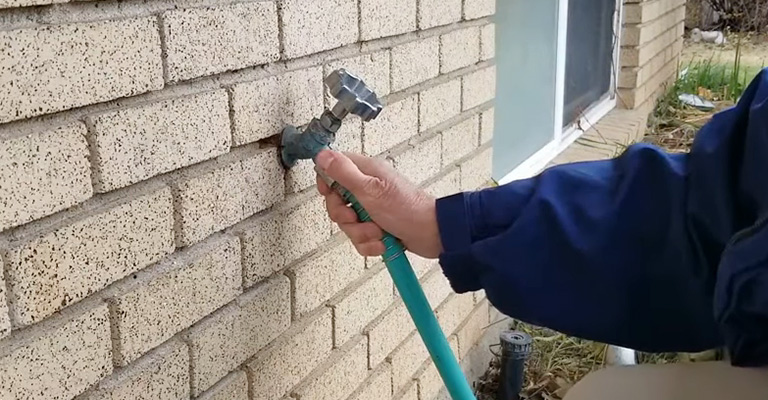
You can start by turning the hose collar counterclockwise while you’re trying to remove it. There is a possibility that you unknowingly tightened the hose on the right side without knowing it.
Make a gentle jiggle with the hose by moving it forward and backward. As a result, the threads in the fixture are freed from any debris or external materials that could have jammed them.
To improve grip, try wearing a pair of leather or rubber gloves.
2. Using a Wrench or Pliers
To begin with, try using a wrench or pliers. First, spray WD-40 or another form of lubricant into the threads and let it sit for a few minutes. Once the hose is loose, use the wrench or pliers to loosen it. Don’t worry if it doesn’t work.
You first need to apply some WD-40 or any other lubricant inside the threads and let them rest for a while. Lubricating your hose can smooth the surface and make it easier to remove if it is rusted or corroded.
You can then unfasten the hose comfortably using the wrench and pliers. The majority of the time, this should work. In case it doesn’t, don’t worry. Using this method, you can see if it works for you.
3. Using A Hacksaw
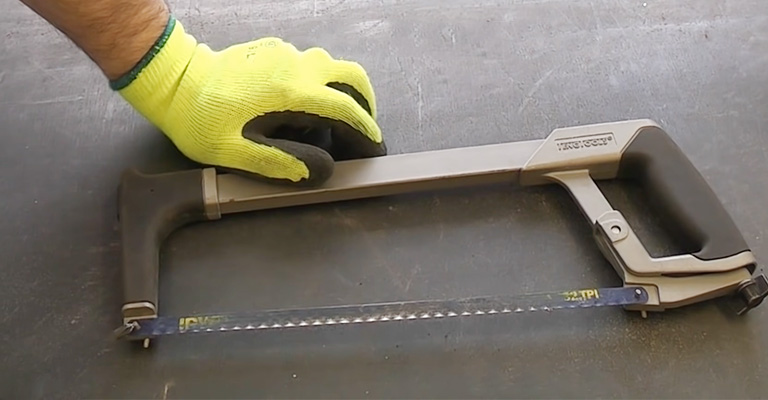
Our outdoor spigot was stuck with a hose that was impossible to remove without a hacksaw. To achieve this, saw vertically, perpendicular to the threads.
Take your time working the hacksaw through the hose coupling and be careful not to see through the spigot.
Work the cut using a flat-headed screwdriver or a small pry bar once you have clearance. Make sure the coupling snaps by twisting inside the cut.
Take your time. It may take a couple of tries. Try twisting the pry bar again after using the hacksaw, and you should be able to snap the coupling eventually.
Upon snapping, you should now be able to easily remove the hose. The loosening will make it easier to remove.
How Do I Use A Hacksaw To Cut The Coupling?
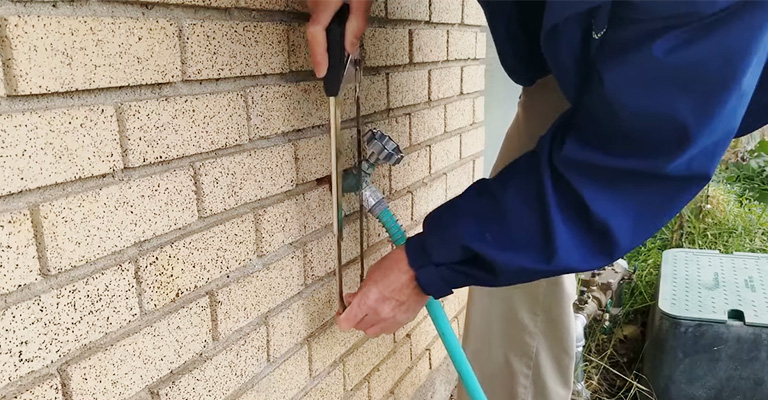
It can be tricky since you must ensure that you saw the hose vertically and perpendicularly. Through the coupling of the hose, you must continuously work the hacksaw.
Be careful not to cut through the spigot. Using a pry bar or flathead screwdriver, carefully work the incision you made with the hacksaw once you gain some leverage.
The next step is to twist the cut from the inside to break the coupling with a pry bar. Attempting this several times may result in success. If you can’t break the coupling, you may need to use the hacksaw again.
We won’t have long until the coupling snaps. A snapping of the coupling will enable you to remove the hose that was stuck on the fixture.
4. Use A Heat Gun
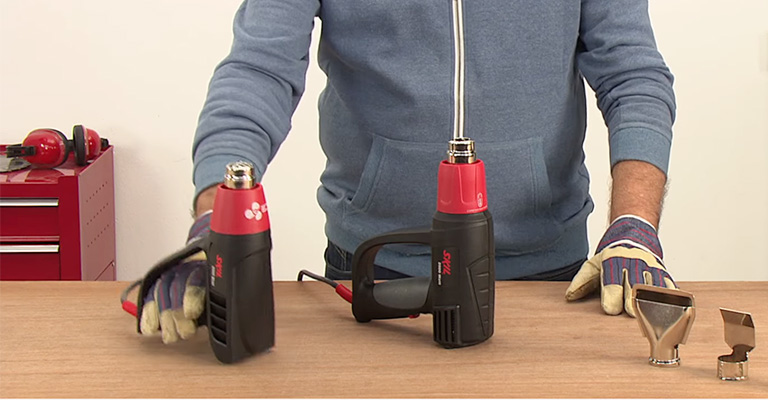
You may want to try heating your garden hose with a hairdryer or heat gun if these methods don’t work. The expansion of metal is a scientific fact.
A considerable amount of heat will result in the hose expanding and ultimately loosening. If the hose nozzle is stuck, you can unstick it with a pair of locking pliers after heating it.
Tips To Prevent This From Happening
Having experienced this once, it is not something you wish to repeat. Be sure to unhook the hose from the spigot every few months in the future.
Be sure to clean off any corrosion that you see. There is a possibility that your water hose will get stuck on your brass spigot if you have an aluminum end on your hose and a brass spigot on your water line.
You might want to consider adding a quick connection in brass or plastic to prevent this from happening again.
Coat Threads With Silicone Grease
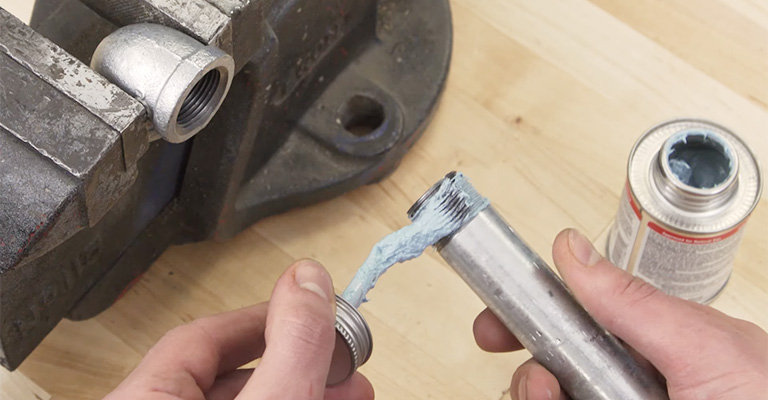
When you have a garden hose with aluminum or brass fittings, a good preventative measure should be to coat the threads of both the fixture’s hose bib and the fitting with the plumber’s silicone grease.
Only Use Garden Hoses With Brass Fittings
Are you looking for a real solution to the problem? Avoid using a garden hose with aluminum fittings.
In the end, it will result in corrosion and eventually fuse with the brass spigot. Buy a brass-fitted garden hose to completely solve the problem.
If It’s Aluminum, Remove It Often
During the season, remove your garden hose from the outdoor faucet at least three to four times. Please don’t leave it on during the winter or in cold months.
Bonus Tip: Keep Your Garden Hose From Freezing
This is the trouble you went through to save the stuck garden hose. It should be able to survive the winter, so let’s make sure it does.
The following are the basic steps you need to take to winterize your garden hose to prevent the hose from freezing and bursting:
If you have any attachments on your hose (like nozzles), remove them. You should drain all the water from the garden hose. Ensure that one end of the container is higher than the other and allow the water to drip out.
Refill the garden hose with water and drain it again. The hose has more water in it, I guarantee it. You will need to reverse the ends (place the lower end at the top and the top end at the bottom).
Using an air compressor and hose end is always a good idea to remove any remaining water from your hose.
Make sure your hose is looped so you can store it more easily. If your hose is kinked, make sure it is straight.
You can hang up your hose (with both ends facing downward) in a warm place. It would be best if it was in an area with no cold air drafts. Aiming for a temperature of 65 degrees or higher would be best.
Final Words
If you’ve ever spent hours combing the internet for the answer to “how do I loosen a hose?”, this is where you’ll find the answer! You can easily remove that stubborn hose from the outdoor spigot with the above instructions.






